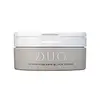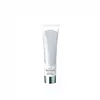What's inside
What's inside
 Key Ingredients
Key Ingredients

 Benefits
Benefits

 Concerns
Concerns

 Ingredients Side-by-side
Ingredients Side-by-side

Ethylhexyl Palmitate
EmollientCaprylic/Capric Triglyceride
MaskingPEG-20 Glyceryl Triisostearate
EmollientSynthetic Wax
AbrasiveIsotridecyl Isononanoate
EmollientPEG-6 Glyceryl Isostearate
EmollientHelianthus Annuus Seed Oil
EmollientStearyl Glycyrrhetinate
Skin ConditioningArgania Spinosa Kernel Oil
EmollientBenzylsulfonyl D-Seryl Homophenylalanine Amidinobenzamide Acetate
Skin ConditioningPalmitoyl Tripeptide-5
Skin ConditioningCharcoal Powder
AbrasiveAspergillus/Rice Ferment Extract
HumectantLactobacillus/Grape Juice Ferment Filtrate
Skin ConditioningLactobacillus/Pear Juice Ferment Filtrate
Skin ConditioningLactobacillus/Nelumbo Nucifera Seed Ferment Filtrate
BleachingSaccharomyces/Day Lily Flower Ferment Filtrate
Skin ConditioningSchizosaccharomyces/Fig Fruit Ferment Filtrate
Skin ConditioningSaccharomyces/Coix Lacryma-Jobi Ma-Yuen Seed Ferment Filtrate
Skin ConditioningSaccharomyces/Barley Seed Ferment Extract
Skin ConditioningSaccharomyces/Hydrolyzed Stachys Affinis Tuber Ferment Filtrate
Skin ConditioningLactobacillus/Olive Leaf Ferment Extract
HumectantGluconobacter/Honey Ferment Filtrate
Skin ConditioningHoney Extract
HumectantCandida Bombicola/Glucose/Methyl Rapeseedate Ferment
AntimicrobialCeramide Ng
Skin ConditioningCeramide AP
Skin ConditioningCeramide Ag
HumectantCeramide NP
Skin ConditioningCeramide EOP
Skin ConditioningCynara Scolymus Leaf Extract
Skin ConditioningAscorbyl Tetraisopalmitate
AntioxidantVaccinium Myrtillus Leaf Extract
AstringentHydroxystearic Acid
CleansingSilica
AbrasiveLactobacillus/Ilex Paraguariensis Leaf Ferment Filtrate
Skin ConditioningZymomonas Ferment Extract
HumectantMaltodextrin
AbsorbentCitrus Grandis Peel Oil
MaskingCitrus Aurantifolia Oil
CleansingUndecane
EmollientTridecane
PerfumingGlycine Soja Sterols
EmollientBis-Ethoxydiglycol Cyclohexane 1,4-Dicarboxylate
EmollientCetyl Ethylhexanoate
EmollientSilica Dimethyl Silylate
EmollientPolyglyceryl-2 Triisostearate
EmulsifyingWater
Skin ConditioningButylene Glycol
HumectantHydrogenated Lecithin
EmulsifyingGlycerin
HumectantTocopherol
AntioxidantCitric Acid
BufferingPolyhydroxystearic Acid
EmulsifyingPhenoxyethanol
PreservativeSodium Hydroxide
BufferingEthylhexyl Palmitate, Caprylic/Capric Triglyceride, PEG-20 Glyceryl Triisostearate, Synthetic Wax, Isotridecyl Isononanoate, PEG-6 Glyceryl Isostearate, Helianthus Annuus Seed Oil, Stearyl Glycyrrhetinate, Argania Spinosa Kernel Oil, Benzylsulfonyl D-Seryl Homophenylalanine Amidinobenzamide Acetate, Palmitoyl Tripeptide-5, Charcoal Powder, Aspergillus/Rice Ferment Extract, Lactobacillus/Grape Juice Ferment Filtrate, Lactobacillus/Pear Juice Ferment Filtrate, Lactobacillus/Nelumbo Nucifera Seed Ferment Filtrate, Saccharomyces/Day Lily Flower Ferment Filtrate, Schizosaccharomyces/Fig Fruit Ferment Filtrate, Saccharomyces/Coix Lacryma-Jobi Ma-Yuen Seed Ferment Filtrate, Saccharomyces/Barley Seed Ferment Extract, Saccharomyces/Hydrolyzed Stachys Affinis Tuber Ferment Filtrate, Lactobacillus/Olive Leaf Ferment Extract, Gluconobacter/Honey Ferment Filtrate, Honey Extract, Candida Bombicola/Glucose/Methyl Rapeseedate Ferment, Ceramide Ng, Ceramide AP, Ceramide Ag, Ceramide NP, Ceramide EOP, Cynara Scolymus Leaf Extract, Ascorbyl Tetraisopalmitate, Vaccinium Myrtillus Leaf Extract, Hydroxystearic Acid, Silica, Lactobacillus/Ilex Paraguariensis Leaf Ferment Filtrate, Zymomonas Ferment Extract, Maltodextrin, Citrus Grandis Peel Oil, Citrus Aurantifolia Oil, Undecane, Tridecane, Glycine Soja Sterols, Bis-Ethoxydiglycol Cyclohexane 1,4-Dicarboxylate, Cetyl Ethylhexanoate, Silica Dimethyl Silylate, Polyglyceryl-2 Triisostearate, Water, Butylene Glycol, Hydrogenated Lecithin, Glycerin, Tocopherol, Citric Acid, Polyhydroxystearic Acid, Phenoxyethanol, Sodium Hydroxide
Glycerin
HumectantMyristic Acid
CleansingWater
Skin ConditioningPotassium Hydroxide
BufferingPEG-32
HumectantPEG-6
HumectantPalmitic Acid
EmollientLauric Acid
CleansingDipropylene Glycol
HumectantGlyceryl Stearate Se
EmulsifyingSodium Methyl Cocoyl Taurate
CleansingSqualane
EmollientParfum
MaskingTalc
AbrasiveTetrasodium EDTA
Dipotassium Glycyrrhizate
HumectantTanakura Clay
AbsorbentPolyquaternium-39
Butylene Glycol
HumectantAcetyl Glucosamine
Skin ConditioningAluminum Hydroxide
EmollientAlcohol
AntimicrobialHydrated Silica
AbrasiveQuillaja Saponaria Bark Extract
CleansingHydrolyzed Silk
HumectantPanax Ginseng Root Extract
EmollientPerilla Ocymoides Leaf Extract
TonicSodium Benzoate
MaskingPhenoxyethanol
PreservativeBenzoic Acid
MaskingAlpha-Isomethyl Ionone
PerfumingLimonene
PerfumingLinalool
PerfumingCI 77492
Cosmetic ColorantCI 77499
Cosmetic ColorantCI 77891
Cosmetic ColorantCI 77947
Glycerin, Myristic Acid, Water, Potassium Hydroxide, PEG-32, PEG-6, Palmitic Acid, Lauric Acid, Dipropylene Glycol, Glyceryl Stearate Se, Sodium Methyl Cocoyl Taurate, Squalane, Parfum, Talc, Tetrasodium EDTA, Dipotassium Glycyrrhizate, Tanakura Clay, Polyquaternium-39, Butylene Glycol, Acetyl Glucosamine, Aluminum Hydroxide, Alcohol, Hydrated Silica, Quillaja Saponaria Bark Extract, Hydrolyzed Silk, Panax Ginseng Root Extract, Perilla Ocymoides Leaf Extract, Sodium Benzoate, Phenoxyethanol, Benzoic Acid, Alpha-Isomethyl Ionone, Limonene, Linalool, CI 77492, CI 77499, CI 77891, CI 77947
Alternatives
Ingredients Explained
These ingredients are found in both products.
Ingredients higher up in an ingredient list are typically present in a larger amount.
Butylene Glycol (or BG) is used within cosmetic products for a few different reasons:
Overall, Butylene Glycol is a safe and well-rounded ingredient that works well with other ingredients.
Though this ingredient works well with most skin types, some people with sensitive skin may experience a reaction such as allergic rashes, closed comedones, or itchiness.
Learn more about Butylene GlycolGlycerin is already naturally found in your skin. It helps moisturize and protect your skin.
A study from 2016 found glycerin to be more effective as a humectant than AHAs and hyaluronic acid.
As a humectant, it helps the skin stay hydrated by pulling moisture to your skin. The low molecular weight of glycerin allows it to pull moisture into the deeper layers of your skin.
Hydrated skin improves your skin barrier; Your skin barrier helps protect against irritants and bacteria.
Glycerin has also been found to have antimicrobial and antiviral properties. Due to these properties, glycerin is often used in wound and burn treatments.
In cosmetics, glycerin is usually derived from plants such as soybean or palm. However, it can also be sourced from animals, such as tallow or animal fat.
This ingredient is organic, colorless, odorless, and non-toxic.
Glycerin is the name for this ingredient in American English. British English uses Glycerol/Glycerine.
Learn more about GlycerinPhenoxyethanol is a preservative that has germicide, antimicrobial, and aromatic properties. Studies show that phenoxyethanol can prevent microbial growth. By itself, it has a scent that is similar to that of a rose.
It's often used in formulations along with Caprylyl Glycol to preserve the shelf life of products.
Water. It's the most common cosmetic ingredient of all. You'll usually see it at the top of ingredient lists, meaning that it makes up the largest part of the product.
So why is it so popular? Water most often acts as a solvent - this means that it helps dissolve other ingredients into the formulation.
You'll also recognize water as that liquid we all need to stay alive. If you see this, drink a glass of water. Stay hydrated!
Learn more about Water